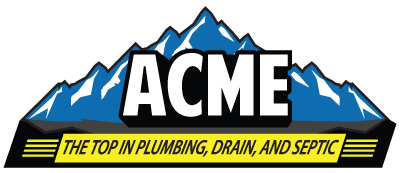Top Signs of a Sewer Line Backup and How to Address Them Quickly
A sewer line backup is one of the most dreaded plumbing problems for homeowners. It can cause significant damage to your property, disrupt your daily routine, and pose serious health risks. Knowing the signs of a sewer line backup and how to address them quickly can save you time, money, and stress. Here are the top signs to watch out for and the steps you should take to resolve the issue.
Top Signs of a Sewer Line Backup
Multiple Drain Clogs: If you notice that several drains in your home are clogged simultaneously, it’s a strong indication of a sewer line issue. This is particularly true if the clogs occur in drains that are used less frequently, like guest bathrooms.
Gurgling Sounds: Strange gurgling noises coming from your drains, toilets, or pipes often indicate a blockage in the sewer line. These sounds are caused by trapped air as water struggles to flow past the obstruction.
Sewage Backups: The most obvious sign of a sewer line backup is sewage coming up through your drains. This is a serious problem that requires immediate attention to prevent extensive damage and health hazards.
Slow Drains: If your sinks, tubs, or toilets are draining slower than usual, this could be a sign of a developing blockage in the sewer line. Over time, debris like grease, hair, and soap scum can build up and restrict the flow of wastewater.
Foul Odors: A persistent foul smell coming from your drains or around your property can indicate a sewer line backup. This odor is caused by sewage that is not being properly transported away from your home.
Water Pooling: Unexplained water pooling around floor drains, in your yard, or near your home's foundation can signal a broken or backed-up sewer line. This standing water can cause significant damage to your property and should be addressed promptly.
How to Address a Sewer Line Backup Quickly
Stop Using Water: As soon as you notice signs of a sewer line backup, stop using water in your home. This includes turning off faucets, not flushing toilets, and avoiding using any appliances that require water. This helps prevent further backups and minimizes the risk of water damage.
Check for Localized Clogs: Sometimes, the issue may be due to a clog in a specific drain rather than the main sewer line. Use a plunger or drain snake to try to clear the obstruction. If this doesn't work, the problem is likely in the main sewer line.
Contact a Professional Plumber: Sewer line backups require professional intervention. Call a licensed plumber who specializes in sewer line repairs and drain cleaning. They will have the necessary tools and expertise to diagnose the problem and recommend the best course of action.
Consider a Sewer Camera Inspection: A plumber can perform a sewer camera inspection to pinpoint the exact location and cause of the backup. This non-invasive method involves inserting a small camera into the sewer line to visually inspect the interior and identify any blockages or damage.
Sewer Line Cleaning: Depending on the severity of the blockage, your plumber may recommend a hydro jetting service. This involves using high-pressure water jets to clear out debris, grease, and tree roots from the sewer line, restoring proper flow.
Repair or Replace Damaged Pipes: If the sewer line is damaged or collapsed, it may need to be repaired or replaced. Trenchless sewer repair methods, such as pipe bursting or pipe lining, can fix the issue with minimal disruption to your property.
Preventing Future Sewer Line Backups
Regular Maintenance: Schedule regular sewer line inspections and cleanings to prevent blockages from forming.
Mindful Disposal: Avoid flushing non-biodegradable items, grease, and large quantities of food waste down your drains.
Tree Root Management: Be mindful of planting trees and shrubs near your sewer line, as roots can infiltrate and damage pipes.
Being aware of the top signs of a sewer line backup and knowing how to address them quickly can help you protect your home and avoid costly repairs. Prompt action, combined with regular maintenance, can keep your plumbing system running smoothly and prevent future issues. If you suspect a sewer line backup, don’t hesitate to call a professional plumber to diagnose and resolve the problem efficiently.
